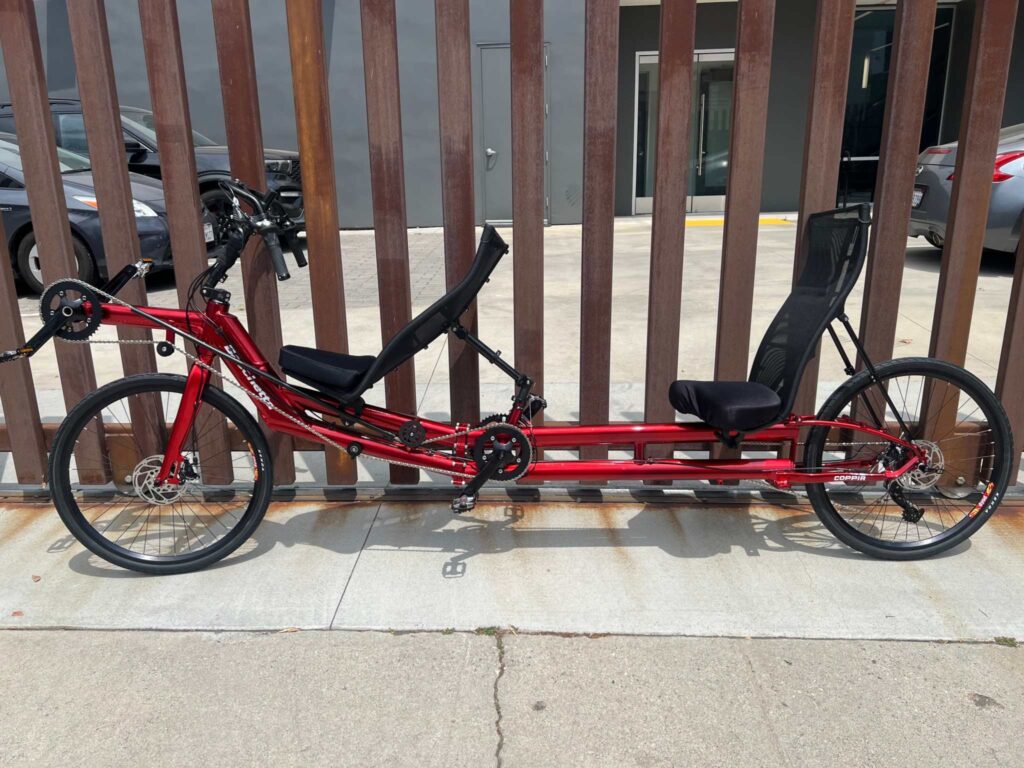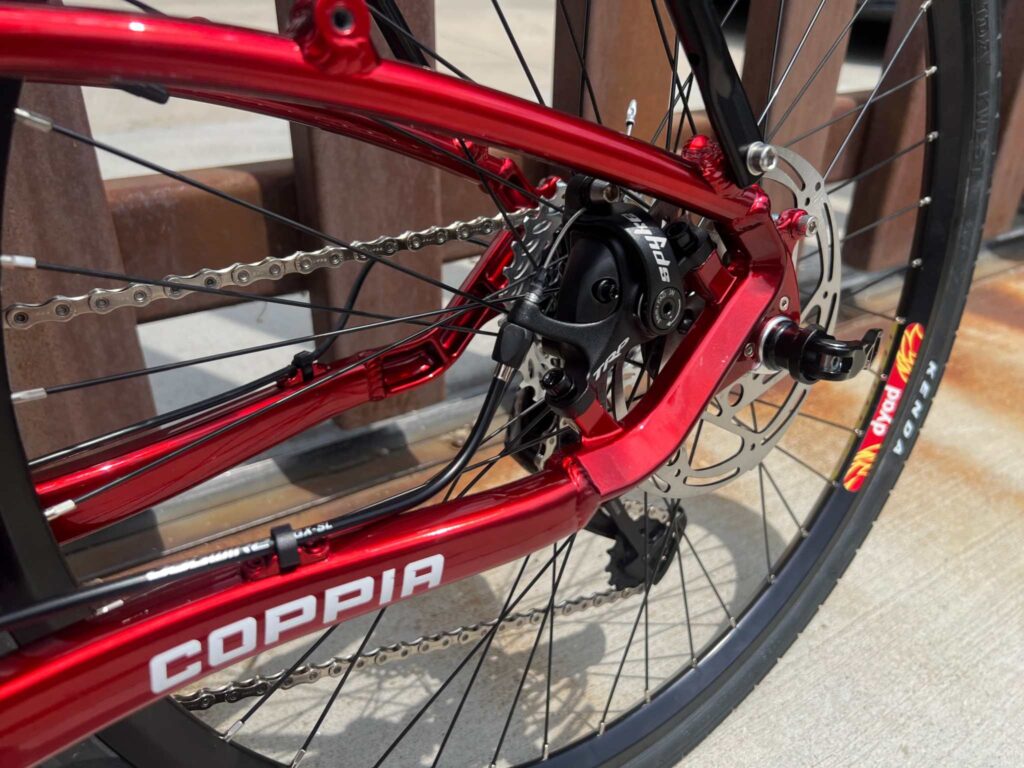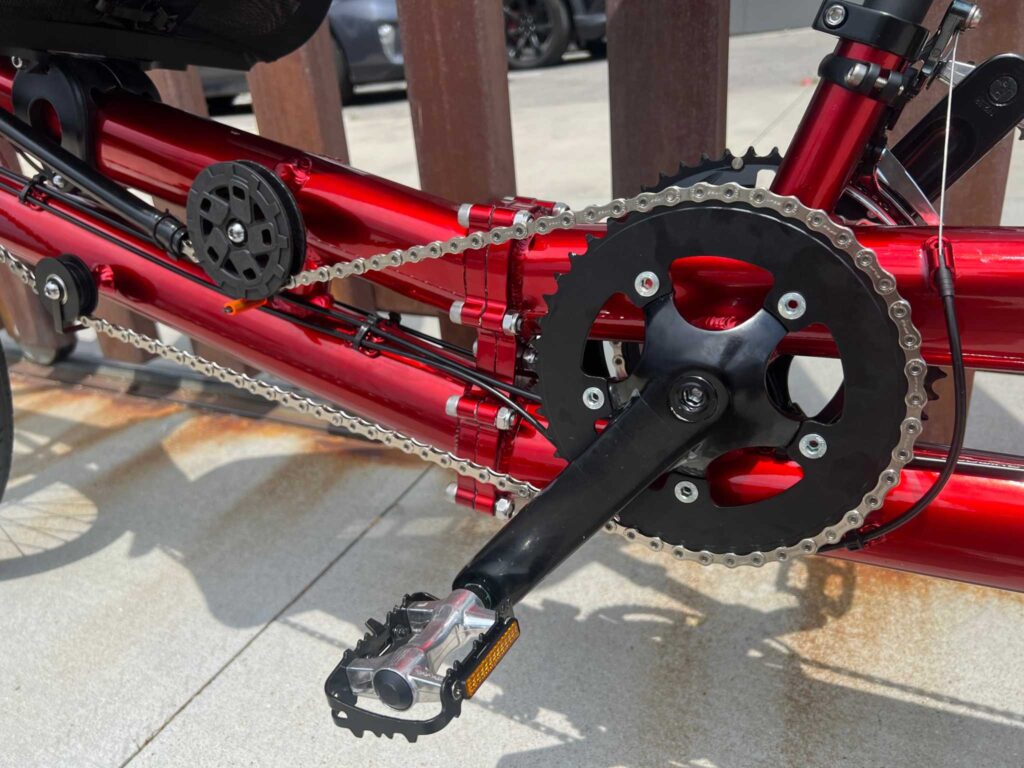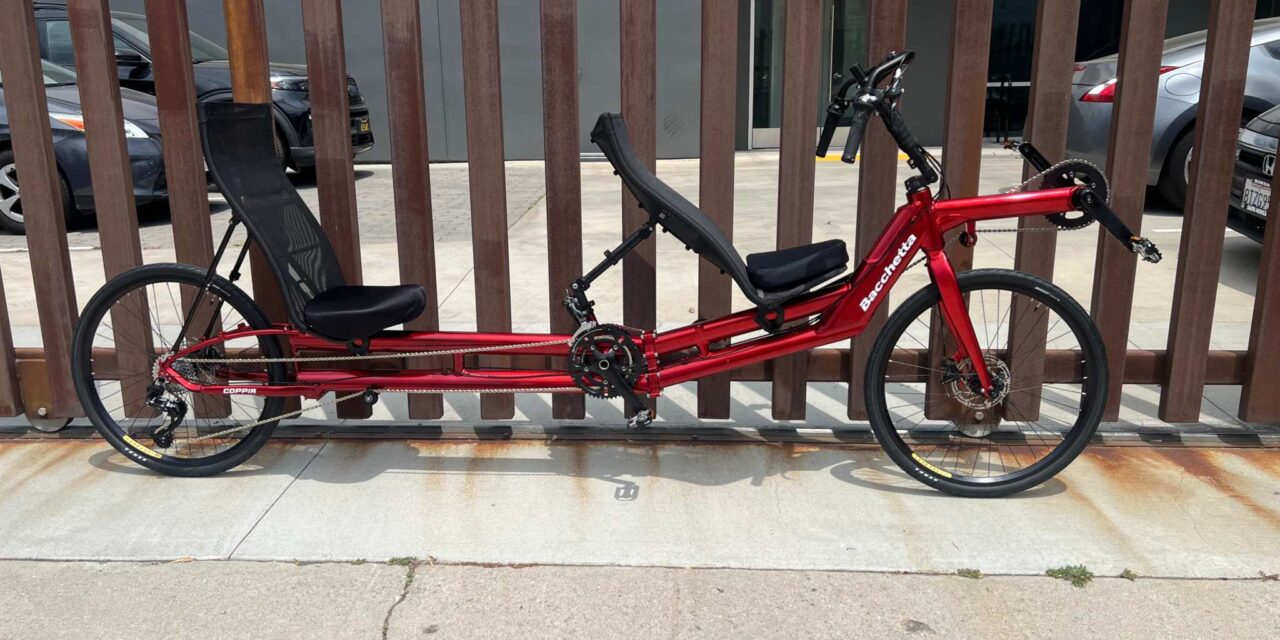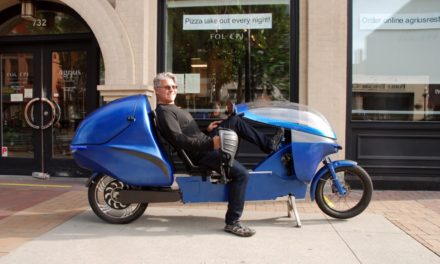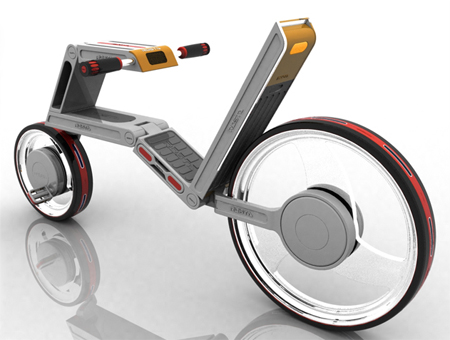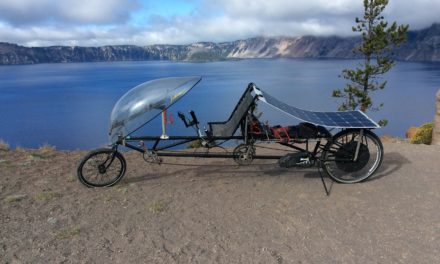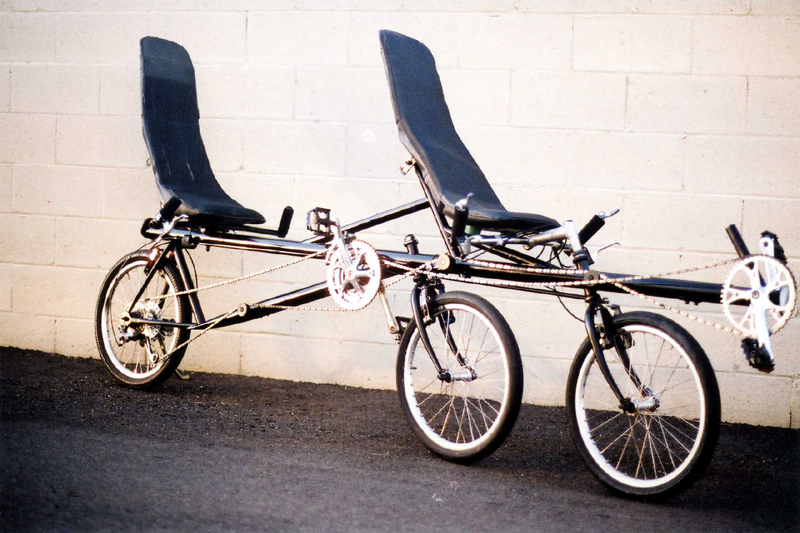The Coppia is designed for sporty leisure riding, with a lightweight, rigid frame and no suspension. It’s a logical extension of Bacchetta’s road and light touring heritage and may appeal to riders who want a fast and fun tandem experience rather than a fully equipped expedition machine.
Frame, fit, and wheels
The Coppia’s frame is built from aluminum and supports either 26″ or 700c wheels. The prototype has a wheelbase of 89.5” / 227 cm, but the production model will stretch to 90.5” / 230 cm to better accommodate the larger tires.
The captain’s mesh seat sits at 24” / 61 cm in the current configuration and fits an x-seam of around 42.5” / 108 cm. There’s room to move the seat forward or a long way back to suit different riders. The stoker’s seat is mounted slightly lower at 22” / 56 cm, currently set up for a 41” / 104 cm x-seam as on photos, with adjustability forward and back as well.
The captain’s bottom bracket height is 32.5” / 83 cm, putting the feet quite a bit above the seat in a typical performance recumbent position.
Dana has also hinted that an electric version of the Coppia, to be called the Pronto Coppia, is already on the drawing board. It will likely share the same integrated mid-drive system as the Pronto Alto and Bella.

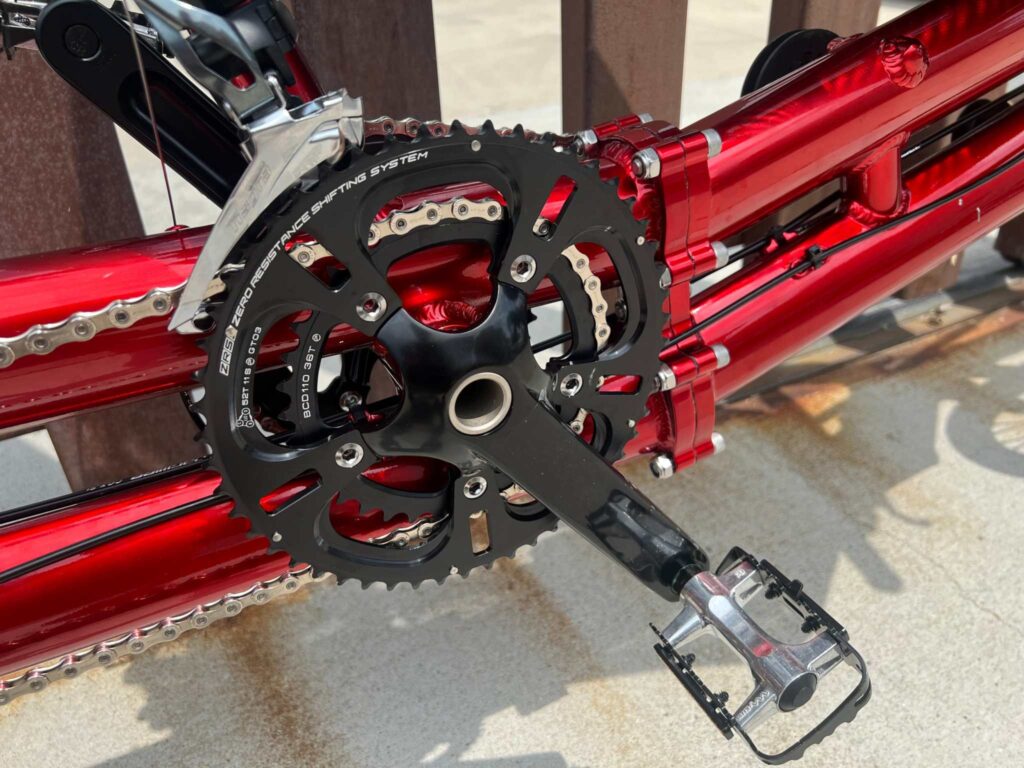
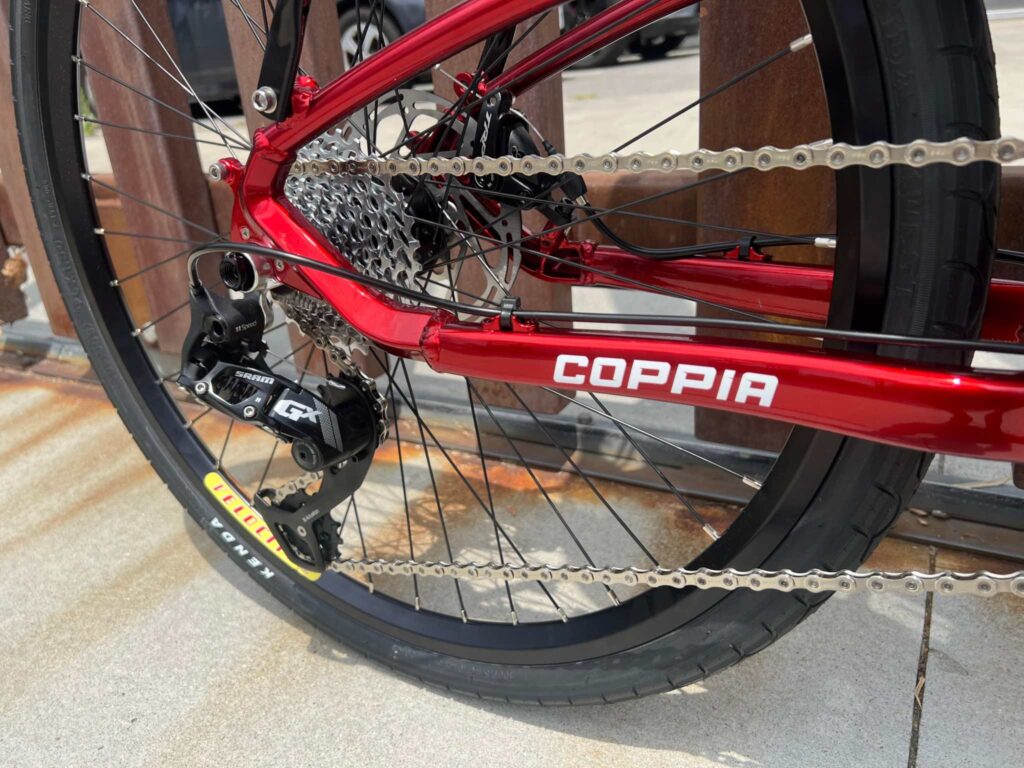
Braking, weight, and handling
The prototype comes equipped with 160 mm disc brake rotors, but the final bike is expected to have 180 mm rotors both front and rear. That’s a good step forward, but in our experience with tandems, even two 180 mm rotors often don’t provide enough stopping power—especially on long descents with heavier riders or gear. For better braking performance and safety, Dana may want to consider either upsizing the rotors even more or introducing a third brake, typically a rear v-brake controlled by the stoker. This is standard practice among many high-end tandem manufacturers and would help give the Coppia the braking power it really needs.
As for weight, it hasn’t been published yet. Dana noted that weighing the prototype has been tricky, as they don’t have a way to hang it properly on the scale.
Despite its length, the Coppia is designed to break in half for transport. That process isn’t exactly simple, since all cables are internally routed and don’t use cable splitters—but it should still be possible to disassemble for airline travel or long-distance car trips.
Pedaling and ride feel
The Bacchetta Coppia does not feature an independent pedaling system (IPS). Instead, both riders’ cranks are linked to spin in sync. While that may limit flexibility for some teams, experienced tandem riders often prefer this setup.
Chuck Coyne, longtime tandem enthusiast and editor-in-chief of Recumbent & Tandem Rider Magazine, shares this view:
“I’m not a fan of the independent pedal systems, providing both riders are in shape physically. If one rider is unable to maintain the cadence or needs a break, then it’s nice to have. But if both are capable riders, getting the pedals out of sync can cause awkward lurches. Maximum power tends to happen when both riders are spinning in sync.”
Handling-wise, the bike rides predictably for a long wheelbase two-wheeler. Heel strike—where your heel hits the front wheel during sharp turns—wasn’t an issue in regular riding, according to Dana. It only happened once during a very tight maneuver out of a parking lot. There’s about 2” / 5 cm clearance with 26” wheels, dropping to 1” / 2.5 cm with 700c wheels.
The production model will also come with a rear handlebar for the stoker, which the prototype currently lacks.
Competition and positioning among other recumbent tandems
Currently, the only other dedicated recumbent tandem still widely available is the AZUB TWIN, which sits in a very different category. The TWIN is a fully suspended, touring tandem that is able to carry heavy loads in comfort over rough terrain. It’s well-suited for expedition use and relaxed travel but not aimed at sporty, road-focused riders.
This leaves the Bacchetta Coppia occupying a relatively unique space: a non-suspended, lightweight tandem with a road-friendly posture and potential for future e-assist. For couples or friends who want to ride together on smoother surfaces without hauling bags across continents, the Coppia could be just right.
Pricing and availability of the Bacchetta Coppia
The Coppia is already listed on Bacchetta’s website at a base price of $6,950 USD / approx. €6,400 (ex duty and VAT), and the company will soon begin taking deposits. Delivery timelines for the first production batch are still being worked out.
For more information about the Coppia, seat options, and specifications, you can visit the official product page here.
Conclusion
Bacchetta’s Coppia is an interesting step forward for the brand. It’s light, simple, and focused, and with the possible addition of an e-assist version, it could become a strong option for couples or riding partners who want to share recumbent rides.
Finally, if you’re wondering what Coppia stands for, it probably won’t surprise you that it means couple in Italian. And if we combine that with the name, Bacchetta, we have two sticks on a ride 🙂
